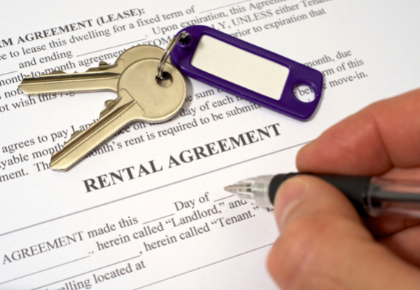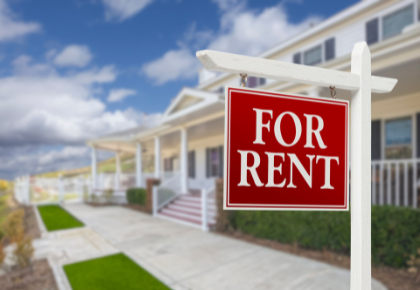HOA Rental Policy: 5 Steps to Adopting HOA Rental Restrictions
 A condo or homeowners association (HOA) might adopt a rental restriction for many reasons. One of the most important reasons to enact HOA rental restrictions is that a small number of rental units in a building or community improves property values, makes it easier for people to obtain favorable housing loans and can make the association eligible for FHA Certification. In addition, renters have less incentive to keep up their homes, follow the rules and earn a place in the community than homeowners do. This makes it important to keep the ratio of renters to owners low and stable.
A condo or homeowners association (HOA) might adopt a rental restriction for many reasons. One of the most important reasons to enact HOA rental restrictions is that a small number of rental units in a building or community improves property values, makes it easier for people to obtain favorable housing loans and can make the association eligible for FHA Certification. In addition, renters have less incentive to keep up their homes, follow the rules and earn a place in the community than homeowners do. This makes it important to keep the ratio of renters to owners low and stable.These benefits of enacting HOA rental restrictions might make you run out and add another rule to your rules and regulations, but not so fast! As a board member, it’s important to methodically assess what rental limits work best for your community and to follow the proper procedure to adopt a cap. In 2016, a case was heard in the Appellate Court First District of Illinois about rental restrictions that a board of directors added to their rules and regulations. Unfortunately, the community didn’t check their governing documents to be sure the new regulation was compliant. For that reason, the case was decided against the association.
To make sure your HOA rental restrictions are compliant and useful, follow this five-step process to enact a rental cap.
-
Prepare for a community discussion
Be sure that you’re adopting a restriction that makes sense for your community. Identify who is asking for the rental cap and what their reasons are for wanting it. Is a request coming from the majority of residents, or just a few people? Are you proactively planning to limit rentals? Prepare for a discussion on the impact of HOA rental restrictions by obtaining data from similar communities in your area to support the initiative.
Make sure the benefits outweigh the drawbacks of the restriction. As stated above, a ratio of 20-25% renters to owners will qualify new buyers for loans with lower interest. Purchasers are also eligible for FHA loans if the rental cap is at 35% or lower. In addition to financial benefits, there is also a community benefit to having a high number of homeowners who tend to be more invested in their community, concerned about rules and regulations and putting down roots in their neighborhood. However, the limit on renters will impact those purchasers who are looking for rental investments in a community. In times when interest rates are low, or when there are many foreclosures on the market, investors may be snapping up real estate, and a low rental rate (or a rental waiting list) may make your community less attractive to them.
If an owner is currently renting their home, they may no longer be able to do so under the new restrictions. It’s possible that the owner might not be able to afford the property if they are restricted from renting it out, or that they would be unable to pay their monthly assessments. That could lead to more sales or even foreclosures, especially during an economic downturn. Finally, rental limits are a signal to renters that they are a less desirable neighbor than a homeowner. A very restrictive rental cap amendment can alienate them from other community members and sow discord in your community.
-
Identify the process to enact the rental changes
There are several ways to adopt HOA rental restrictions. As mentioned in the Illinois case above, you could simply add it to your rules and regulations through a board vote, rather than amending your governing documents. If you choose this route, make sure your governing documents allow you to enact rental cap with a new rule, and ensure that the regulation is legally enforceable.
 An amendment to the association’s governing documents is the best way to make sure the restriction can be enforced without too much interpretation or misunderstanding. An amendment is the best way to stay on strong legal grounds, though it will require a vote by the homeowners. Your property manager should be on hand during this early analysis to give advice on how to manage the drawbacks and make sure your proposal doesn’t cause additional problems for your association.
An amendment to the association’s governing documents is the best way to make sure the restriction can be enforced without too much interpretation or misunderstanding. An amendment is the best way to stay on strong legal grounds, though it will require a vote by the homeowners. Your property manager should be on hand during this early analysis to give advice on how to manage the drawbacks and make sure your proposal doesn’t cause additional problems for your association.
-
Discuss with homeowners
Once you’ve collected your data and built a rental cap proposal, it is important to meet with your homeowners and obtain their buy-in. Make sure your community manager and your association attorney attend so that they can address any procedural questions or legal issues. Go through all the pros and cons of adopting HOA rental restrictions and explain the ramifications of a rental cap on their community. Make sure that you have thought through how you will enforce the restriction and issues such as hardship requests, so you can explain the process to the residents. If the rental cap is lower than the current number of rentals, you may want to grandfather in current landlords. Or you could add a clause to the by-law that each rental expires when the lease is up, until you reach your new rental ratio. Either of these approaches will require careful handling with landlords.
Let the residents air their opinions and work towards a consensus on whether to move ahead with the new rental approach. This is a good time to assess support for the change, especially if you will need a majority vote to enact it in the next step.
-
Adopt the rental amendment
Make sure you vote on the new amendment before your rental ratio is too high – this will save your board members a few headaches as the policy is integrated in your community. If you plan to enact the rental cap via a change to the rules and regulations, a simple majority vote is all you need from the board. If you are changing your community’s by-laws, you’ll need 2/3 of your co-owners to vote for rental caps, and advice from a lawyer. Make sure the attorney you use is one with successful experience in community association law!
-
Enforce the new amendment
 Notify homeowners of the new rental cap and give the owners of rental units any additional information they will need to become compliant. Make sure you’re prepared to answer any last-minute objections or questions about the policy. If there are any new fees or paperwork that landlords or their tenants will need to take care of, explain the requirements in advance. To avoid the perception that renters are second-class citizens, give them the same access to amenities as owners have. Take steps to include them in community events such as a book club or summer picnic.
Notify homeowners of the new rental cap and give the owners of rental units any additional information they will need to become compliant. Make sure you’re prepared to answer any last-minute objections or questions about the policy. If there are any new fees or paperwork that landlords or their tenants will need to take care of, explain the requirements in advance. To avoid the perception that renters are second-class citizens, give them the same access to amenities as owners have. Take steps to include them in community events such as a book club or summer picnic.
There are both pluses and minuses for the question of enacting HOA rental restrictions. Once you have made your initial decision, work with an experienced property management company to define the amendment for your community. For more details, contact FirstService Residential, the leading property management company in Illinois.